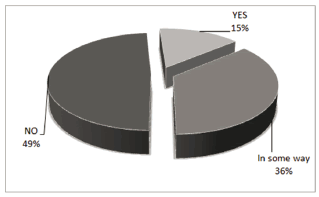Services on Demand
Journal
Article
Indicators
-
 Cited by SciELO
Cited by SciELO -
 Access statistics
Access statistics
Related links
-
 Cited by Google
Cited by Google -
 Similars in
SciELO
Similars in
SciELO -
 Similars in Google
Similars in Google
Share
DYNA
Print version ISSN 0012-7353On-line version ISSN 2346-2183
Dyna rev.fac.nac.minas vol.79 no.171 Medellín Jan./Feb. 2012
QUALITY MANAGEMENT AND INTEGRATED TOTAL QUALITY IN SPANISH MINING: RESULTS OF AN EMPIRICAL STUDY
GESTIÓN DE CALIDAD Y CALIDAD TOTAL INTEGRADA EN LA INDUSTRIA MINERA ESPAÑOLA: RESULTADOS DE UN ESTUDIO EMPÍRICO
CARMEN ESCANCIANO
Doctora en Dirección de Empresas, Escuela de Minas de Oviedo, Universidad de Oviedo, España, Profesor Titular, cescan@uniovi.es
FRANCISCO-JAVIER IGLESIAS-RODRÍGUEZ
Doctor Ingeniero de Minas, Escuela de Minas de Oviedo, Universidad de Oviedo, España, Profesor Titular, fjiglesias@uniovi.es
Received for review December 2th, 2010, accepted March 3th, 2011, final version April, 14th, 2011
ABSTRACT: This paper presents the results of an empirical study conducted in Spain among mining companies that hold ISO 9001 certification. This study aimed at reflecting upon quality management in Spanish mining; and discovering whether the certification of a quality management system provides companies with a framework for integrating total quality management with other management systems, such as environmental management or occupational health and safety management.
KEYWORDS: quality, environment, safety, management system, TQM, integrated total quality
RESUMEN: En este artículo se presentan y analizan los resultados de un estudio empírico realizado en España entre empresas mineras certificadas ISO 9001. El objetivo perseguido es doble: en primer lugar, reflexionar sobre la situación de la gestión de calidad en la minería española; en segundo término, valorar en qué medida la posesión de un sistema de gestión de calidad constituye un pilar a partir del cual iniciar la andadura hacia la calidad total integrada con otros sistemas de gestión tan importantes en este sector industrial como el de la gestión ambiental o la gestión de la seguridad y salud laboral.
PALABRAS CLAVE: calidad, medioambiente, seguridad, sistemas de gestión, TQM, calidad total integrada
1. INTRODUCTION
Despite the restructuring process of the Spanish mining industry, this sector has an annual turnover of around 6,000 million Euros and contributes 4.4 % to the gross added value of the national industry. According to data from the General Sub-director of Mining in the Industry, Tourism, and Trade Ministry, there were 6,000 active mines and employed 80,000 workers (or 2.2 % of the Spanish industrial sector) in Spain's mining industry in 2006. Mining activity has a significant effect on the local economies of cities in regions such as Asturias and Galicia.
On the other hand, since 1994, the increasing concern with quality and its management in our country has been translated into a growing number of certifications in the quality management system (QMS) ISO 9001. For over five years, Spain has been one of the top ten countries in the world for quality certifications according to reports by the International Organization of Standardization [1]. The mining sector companies have not been far from this tendency in using one or several management systems. Although quality, environment and security have followed independent and parallel trajectories of development in the industrial world, the existence of important similarities among the concepts of quality, environment, and labor risk prevention have favored the integration of these management systems. This is undoubtedly due to the fact that ISO 14001 and OHSAS 18001 standards, which establish the requirements for an Environmental Management System (EMS) and an Occupational Health and Safety Management system (OHSAS), respectively, have been designed to be compatible with ISO 9001, sharing its language and structure.
This study operates within this context, using the results of an empirical study conducted in Spain in 2007 to examine how mining companies with ISO 9001 certification integrate quality management and advance towards the so-called integrated total quality (ITQ).
2. AIM OF THE STUDY AND METHODOLOGY
Quality management can be defined as the way a company's top management plans for the future, implements programs, and controls results for the accomplishment, regulation, and systematic, and continuous improvement of its goals and quality by using all available human resources and capital [2,3]. To achieve its goals, the management must use some type of mechanism that both supports and provides the techniques and practices that will be used. In the context of this study, this mechanism consists of the QMS, and the certification is its public manifestation.
Currently, a demonstration of quality helps to ensure corporate survival and achieve a superior competitive position. Consequently, the ISO 9001 certification has become a prerequisite for the introduction of a company into certain sectors and markets as well as a means for survival once the position is established. At the same time, the obligation of maintaining and revising the QMS is a solid pillar to support upgrading to total quality. When a company moves towards TQM, environmental and labor security management perceives it to be a strength, whereas in the past, they would not have taken it into consideration.
Continuous improvement [4] is one of the management principles shared by international standards that are mostly accepted and adopted in the management of quality (ISO 9001), environment (ISO 14001), and labor risk prevention (OHSAS 18001). Continuous improvement is directly related to TQM. As a result, some authors [5,6] have started mentioning integrated total quality (ITQ). Therefore it would be a good idea for all mining companies to pay close attention to the challenges associated with this development. The development of mining activities with significant economic, environmental, occupational, and social repercussions in countries or regions is traditionally associated with stringent legislation regarding prevention and environmental protection, at least in developed countries. Such legislation applies not only to the exploration process but also to extractive activities and their eventual termination. In this respect, it is important to highlight that the implementation of an EMS and an OHSAS offers its users an efficient system that is not only able to manage occupational environment and increment occupational security, but which also fulfills legal obligations in a framework of continuous improvement.
Considering the ISO 9001 certification as a first step towards TQM and excellence and as an attempt to assess the extent to which mining companies have implemented ITQ, the authors contacted National Center for Quality Information (NCQI). As of January 31, 2007, a total of 222 mining companies in Spain held ISO 9001 certification, and 202 of these companies were located. In May 2007, a questionnaire was submitted to the quality managers of these firms after they were contacted by telephone. The sample under evaluation consists of 104 certified mining companies operating within Spain. Table 1 shows the technical data.
The companies in the sample group were distributed among 15 of the 17 Spanish Autonomous Communities. Castilla-León and Galicia had the largest numbers. Figure 1 shows that the profile of certified mining firms in Spain corresponds to that of a small and mid-sized company with no foreign shareholders. Revenue was over 3 million Euros in 60 % of the sample. The majority of the companies concentrated their activities in the national market, and 31 % claimed to export their products to other European countries.
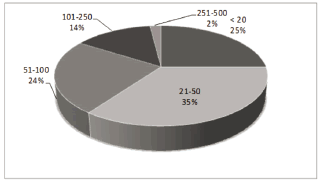
Figure 1. Size of responding companies by employment
3. RESULTS
All of the companies that took part in the study had ISO 9001 certification, and 31 of them also had other international certifications in environment and occupational security (Table 2).
A total of 74 % of the participating companies confirmed that they had a quality department for more than four years, and this percentage increased if the company had more than one certification. The percentage increased to 80.8 % when the company also had ISO 14001 certification and reached 100 % when it had three certifications (Table 3). These results suggest the following findings:
- Concerns over quality and its improvement among Spanish mining companies is not as recent as one would think (the average age of quality-related departments at the end of this study was 12 years). Mining companies directly extract their product from nature, and their clients often transform or incorporate mined materials with other elements into an industrial process.
- Companies with older quality departments chose to further complement their EMS with other management systems. This finding confirms the research of Rubio et al. (2006), who found that organizations with implemented QMS were more receptive to EMS and OHSAS. In addition, 48.9 % of the surveyed firms confirmed that quality, environment and labor risk prevention were managed by the same department.
Table 3. Age of quality department

In 87 % of the cases, the top management decided to implement a QMS and to obtain a certification for it. The reasons underlying this decision were scored on a five-point Likert-type scale by the surveyed companies' quality managers, with 1 indicating very little importance and 5 being very important.
Table 4. Reasons for pursuing certification
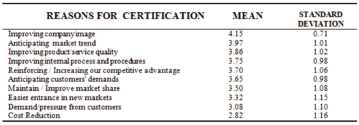
A factorial analysis was performed to summarize the information obtained. This analysis led to the identification of two factors that explained approximately 60 % of the variance in the original variables (shown in Table 5).
Table 5. Factor analysis of motivations for pursuing ISO 9001 certification
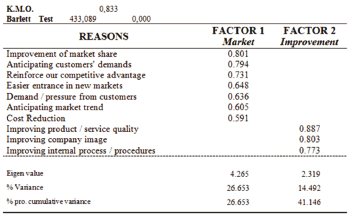
The first factor, which we call “market,” relates to a company's desire to conserve or establish a position in the market. The second factor, called “improvement,” includes reasons associated with quality improvement in general and the operation of the company in particular. Such improvements address the enhancement of quality and products and result from clearly defined processes and procedures capable of streamlining operations to strengthen the company's image.
As Table 4 illustrates, “improvement”-related motivational factors receive higher average scores on the Liker-type scale. This seems to indicate that mining companies develop new methods, tools and/or mechanisms that contribute to the improvement of their image. These companies do so to anticipate their clients' desires and general market trends, thereby distancing themselves from the perception of mining as an industry in decline.
Have the certified mining companies accomplished their objectives? This appears to be the case, as shown in Table 6. The benefits experienced by mining companies are of an internal and external nature. They can affect the company and its constituents or the company's relationship with its clients (who become more satisfied and loyal) and suppliers. Our review of the intensity of certification benefits indicates that Spanish mining companies achieved their objectives, especially those associated with the “improvement” factor.
Table 6. Benefits of ISO 9001 certification
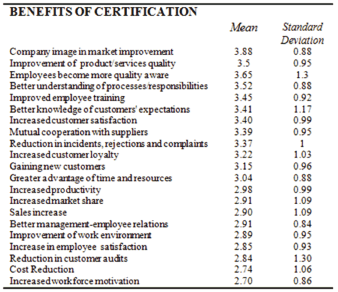
The notion of quality has evolved progressively in stages. These can be envisaged as “cultural jumps” whereby the concept of quality has gradually broadened to reach the point of TQM [6]. Even though TQM and ISO 9001 are not opposed in their fundamental principles, there are several differences. TQM involves a more advanced level of quality management [8]. ISO 9001:2000 introduced several elements that made it similar to the TQM philosophy, such as the need to demonstrate continuous improvement and an emphasis on client satisfaction and properly-trained personnel. According to several experts, each time the ISO 9000 family is reformulated, it becomes more similar to total quality and so-called “business excellence” models [9]. In this respect, Gotzamani et al. [10] suggest that there are two schools of thought on the effectiveness of the ISO 9000 standards and the systems on which they are based: the optimistic and the pessimistic. The optimistic view maintains that these standards may function as a good first step towards TQM because when properly implemented, ISO 9000 standards represent a subsystem of TQM [6]. The negative or pessimistic view holds that firms focus mainly on getting a quick and easy certification of their QMS without a true commitment to quality [12]. The authors of the present work follow the optimistic school of thought.
Numerous studies indicate that most certified companies that plan or decide to use the infrastructure and benefits of ISO 9001 standards do it as a means of achieving TQM [8,13,14]. Although nearly 70 % of the mining companies in this study considered certification to be a good first step towards total quality, at the time of the survey, most were reticent to act upon this step (Fig. 2). Thus, while 15 % were applying TQM, almost half of the samples were not. These firms may consider certification an end in itself, or they may consider it to be too premature to set new goals in matters of quality. It may also be the case that they understand that certification has not fulfilled their expectations.
The decision to implement and certify a QMS is an important decision through which the company will seek to fulfill more or less ambitious expectations. Its opinion about the certification will depend on the fulfilled expectations, as these will determine its future conduct. By performing a nonparametric Kruskal-Wallis test, it is possible to confirm the above statements. The results obtained indicate differences in the valuation of the level of satisfaction with certification and the degree of application of TQM in the surveyed companies. As Table 7 illustrates, mining companies that claim to apply TQM say they are the most satisfied.
Table 7. Kruskal-Wallis test: Application of TQM and satisfaction with ISO 9001 certification

As stated earlier, quality is currently understood in the broad sense that incorporates environmental and occupational safety management. The number of companies with more than one certification is rising steadily and many of them are already experimenting with the integration of their management systems. A changing culture is dawning, one that is paving the way from TQM to ITQ [6]. Environmental management has been associated with quality through the tool or methodology used: the implementation of a QMS based on ISO 9001 [15]. Thus, the implementation of the quality norm facilitates the subsequent implementation of the environment standard, since the companies that apply QMS can develop a set of capabilities that can facilitate the implementation of an EMS [17-19]. On the other hand, security is a dimension of quality [20] and, in the mining sector, it is an inescapable requirement.
It is possible to conclude that even though not all of the certified mining companies in this study are moving towards ITQ, there is a general movement in that direction. Therefore, one could think that the companies that have more certifications are those that more strongly apply the TQM and are closer to ITQ. The Contingency Table confirms this. Table 8 shows that mining companies with more than one implemented and certified management system are those that reported using TQM, and 60 % of these companies had all three certifications (ISO 9001, ISO 14001, and OHSAS 18001).
Table 8. Contingency table: TQM application and number of certifications

ITQ as a concept does not emerge merely from the possibility for a company to exploit existing synergies between different management systems that it can adopt (saving money, time, and human resources). On the contrary, it is something intrinsic to the cornerstones of TQM, namely continual improvement and total customer satisfaction [4]. It is an eagerness for improvement that underlies the reasons that influenced the company's decision to implement and certify EMS and OHSAS, as shown in Tables 9 and 10.
Table 9. Reasons for pursuing ISO 14001 certification

Table 10. Reasons for pursuing occupational health and safety management system certification

Spanish mining companies must conform to rigorous environmental and occupational risk prevention legislation as a condition to their participation in this industry. In fact, achieving compliance with the legislation and fulfilling it is the fundamental motivation for the implementation of EMS and the second in importance in the case of OHSAS. The desire to complement other management systems is another outstanding argument. If we add that the principles of good management are common, the important similarities among international standards ISO 9001, ISO 14001, and OHSAS 18001, the integration of management systems is understandable [21,22].
Integration is not an obligation but an opportunity motivated by the possibility to exploit the advantages it can bring. The integration of management systems is not an indispensable requirement that an organization has to comply with when it decides to adopt two or more management systems. Rather, it is an opportunity to exploit the synergies in terms of resources and skills, as suggested by the standards themselves [5]. Therefore, integration simplifies the implementation of other management systems, and these systems often have similar requirements necessitating only small adjustments to adapt to the new management system. Such a tendency has been contrasted by the Spanish Association of Normalization and Certification (AENOR). In order to respond to popular demand, its Technical Committee 66 “Quality management and conformity evaluation” developed the standard UNE 66177 “Guide for integration of management systems.” This text incorporates the tools, elements, and abilities required to implement and improve the integration of management systems.
In our case, the companies in the sample mostly declared that they were immersed in this integration process independently of the number of certifications, even though we can observe that the percentage of companies that affirmed they have a integrated management system was higher when they had more than one certification (Table 11). Based on the above findings, we can conclude that system integration has the advantage of bringing the company closer to the wider concept of TQM, with continuous improvement as one of the principles of management shared by QMS, EMS, OHSMS, and therefore also ITQ.
Table 11. Contingency table: management systems integration and number of certifications

4. CONCLUSIONS
Strong competition demands a high level of quality. The implementation and certification of a QMS is one of the most frequent strategies pursued by companies to demonstrate their commitment to quality and improvement. The ISO 9001 certification is not only a management tool; it also has the potential to bring a company towards TQM. Continuing to use the certification implies a commitment to periodically revising the QMS to facilitate its improvement and adaptation to new circumstances. At the same time, it provides the basis for the company to move towards a more integrated quality management that incorporates notions of environmental and occupational security. Environmental quality refers to the incorporation of a series of initiatives that minimize negative environmental impacts in a company's management strategies. The implementation and certification of an EMS is an example of such a measure. Labor risk prevention is another factor to consider in the daily management of the company, and its integration into the general management system is an obligation and not an option [23]. Thus, an OHSMS 18001 is as an ideal tool to implement preventive activities in an organization, providing it with a structured means for security and occupational health management.
As our study shows, the Spanish mining industry has followed many of these trends. Our results indicate that a larger number of companies have decided to implement an EMS and/or an OHSMS. Rather than approaching these challenges simultaneously, companies have first implemented a QMS based on ISO 9001 that has not elevated satisfaction levels.
Our study also reveals that this sector evolves towards the integration of management systems. Integration is the process of uniting distinct, internationally standardized management subsystems into a single management system throughout the organization, resulting in a stronger and broader overall management system [24]. In this sense, our results show the mining companies' tendency to complement their QMS with other management systems (e.g., EMS and OHSMS) that share common elements (e.g., continuous improvement), and allow for one to demonstrate their commitment to comply with the legislation. If we add the fact that the personnel working with the different systems favor the spontaneous development of integration, it is possible to consider that ITQ is taking place in the Spanish mining sector.
Finally, it is important to emphasize that the Spanish mining sector has begun to demonstrate the possibility of sustainable mining management by showing measurements and indicators of sustainability. AENOR has pioneered the development of two standards of sustainable mining management that have worldwide relevance.
UNE-22470:2008 establishes social, economic, and environmental indicators to evaluate the implementation of a sustainable mining management system.
UNE 22480:2008 is based on ISO 14001, and describes the requirements for the implementation of a sustainable mining management system certified by a third party. It also enables an organization to develop a system for the continuous improvement of its performance in relation to sustainability criteria, and it integrates the legal requirements and information related to the aspects of sustainability that an organization endorses, independent of the kind of mining activity it performs.
This reference also highlights the active role of top management in the success of the system. Thus, UNE 22480 established that companies must make continuous improvements to their performance, as evaluated by sustainable mining management indicators, and must fully comply with legislations and regulations pertinent to mining as well as any other requirements the company wishes to endorse. This new management system standard complements pre-existing systems with a commitment to continuous improvement.
These two UNE standards were published after this study and prevented us from gathering information on their utilization by the mining companies in our sample. Thus, in future studies, we will research sustainable mining management systems in Spain and the synergies between these systems and QMS, EMS, OHSMS. and corporate social responsibility management systems.
REFERENCES
[1] ISO. The ISO Survey of Certifications. Available: http://www.iso.org [citado 30 Noviembre de 2010]. [ Links ]
[2] Udaondo, M., Gestión de Calidad, Díaz de Santos, Madrid, 1992. [ Links ]
[3] Brocka, B. and Brocka, M.S., Quality Management, Vergara, Buenos Aires, 1994. [ Links ]
[4] Massoud, M.A., Fayad, R., Kamleh, R. and El-Fadel, K., Environmental Management system (ISO 14001) certification in developing countries: challenges and implementation strategies, Environmental Sciences & Technology, 44(6), pp. 1884-1887, 2010. [ Links ]
[5] Salomone, R., Integrated management systems: experiences in Italian organizations, Journal of Cleaning Production, 16(16), pp. 1786-1806, 2008. [ Links ]
[6] Salomone, R. and Franco, G., Dalla "qualitá total alla qualitá integrata". L'integrazionedei sistema di gestione qualitá, ambiente, sicurezzaedetica per ilvantaggio competitivo, Franco Angeli, Milán, 2006. [ Links ]
[7] CONTI, T., How to conceptually harmonize ISO 9000 certification, levels of excellence recognition and real improvement, Total Quality Management, 15(5-6), pp. 665-677, 2004. [ Links ]
[8] Martínez-Lorente, M., Martínez-Costa, R. and Choi, T.Y., Simultaneous consideration of TQM and ISO 9000 on performance and motivation: an empirical study of Spanish companies, International Journal of Production Economics, 113(1), pp. 23-29, 2008. [ Links ]
[9] Sangüesa, M, Mateo, R. and Ilzarbe, L., Teoría y práctica de la calidad, Thomson, Madrid, 2006. [ Links ]
[10] Gotzamani, K., Nicolau, M., Nicolaides, A. And Hadjiadamou, V., The contribution to excellence of ISO 9001: the case of certified organisations in Cyprus, The TQM Magazine, 19(5), pp. 388-402, 2007. [ Links ]
[11] Sun, H., Total Quality Management, ISO 9000 certification and performance improvement, International Journal of Quality & Reliability Management, 17(2), pp. 168-179, 2000. [ Links ]
[12] CORRIGAN, J. Is ISO 9000 the path to TQM? Quality Progress, 27, pp. 33-36, 1994. [ Links ]
[13] Martinez-Costa, R., Choi, T.Y. and Martínez-Lorente, M., ISO 9000/1991, ISO 9001/2000 and TQM performance debate revisited, Journal of Operations Management, 27(6), pp. 495-511, 2009. [ Links ]
[14] Escanciano, C., Fernández, E. and Vázquez, C., Influence of ISO 9000 on the progress of the Spanish industry towards TQM, International Journal of Quality & Reliability Management, 18(5), pp. 481-494, 2001. [ Links ]
[15] Bernardo, M., Casadesús, M., Karapetrovic, S. and Heras, I., How integrated are environmental, quality and other standardized management systems?:an empirical study, Journal of Cleaner Production, 17(8), pp.742-750, 2009. [ Links ]
[16] Poksinska, B., Dahlgaard, J.J. and Eklund, J.A.E., Implementing ISO 14000 in Sweden: motives, benefits and comparisons with ISO 9000, International Journal of Quality & Reliability Management, 20 /5), pp. 585-606, 2003. [ Links ]
[17] Curkovic, S., Environmentally responsible manufacturing: the development and validation of a measurement model", European Journal of Operational Research, 146, pp. 130-155, 2003. [ Links ]
[18] Darnall, N. and Edwards, D., Predicting the cost of environmental management system adoption: the role of capabilities, resources and ownership structure, Strategic Management Journal, 27, pp. 301-320, 2006. [ Links ]
[19] Darnall, N., Henriques, I. and Sadorsky, P. Do environmental management systems improve business performance in an international setting? Journal of International Management, 14(4), pp. 364-376, 2008. [ Links ]
[20] García, S., Mariscal, M.A., Manzanedo, M.A. and Ritzel, D.O., From the traditional concept of safety to safety integrated with quality, Journal of Safety Research, 33, pp. 1-20, 2002. [ Links ]
[21] Rubio, J.C. and López, A.A., Los sistemas integrados de gestión, En: ISO 900, ISO 140001 y otros estándares de gestión: presente, pasado y futuro (Eds. I. Heras), Thomson-Civitas, pp. 271-284, 2006. [ Links ]
[22] Wagner, M., Integration of environmental management with other managerial functions of the firm, Longe Range Planning, 40, pp. 611-628, 2007. [ Links ]
[23] INSHT, Guía Técnica para la Integración de la Prevención de Riesgos Laborales en el Sistema de Gestión General de la Empresa, 2008. Available: http://www.insht.es [citado 30 de Noviembre de 2010]. [ Links ]
[24] Karapetrovic, S., Los sistemas integrados de gestión a debate, En: ISO 9000, ISO 14001 y otros estándares de gestión: presente, pasado y futuro, (Eds. I. Heras), Thomson-Civitas, pp. 305-314, 2006. [ Links ]















